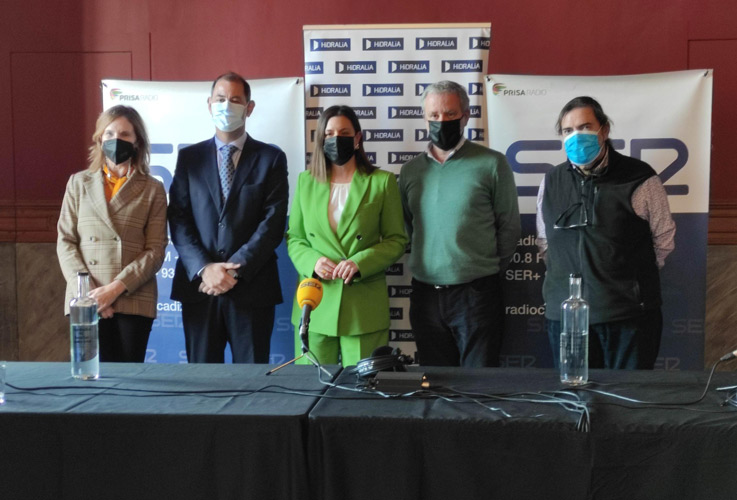Water as an engine to achieve a sustainable San Fernando
Hidralia and the City Council of San Fernando present the experiences and projects to combat Climate Change in San Fernando
San Fernando is carrying out different actions, experiences and pilot projects to become a sustainable city with the capacity to adapt to the new demands of global warming. In this sense, water becomes an essential engine to achieve this objective and this is understood by both the City Council of San Fernando and Hidralia, the company in charge of the management of the supply and sanitation of the city.

In this way they have announced, in a special program of Hoy por Hoy Cádiz de la Ser called 'City and Water in the face of Climate Change', the initiatives that are being developed around water to mitigate the effects that accelerate climate change, achieve a resilient city in the face of the consequences of this process and preserve a resource as necessary as water.
An event in which Javier Benavente (Professor of the Earth Sciences Department of the Faculty of Marine and Environmental Sciences), José Luis Trapero (manager of Hidralia), Mónica Pérez (Director of Green/Blue Infrastructure and Sustainable Tourism of AGBAR), Ernesto Sánchez (Director of Business Development and Innovation of Hidralia), Manuel Fustegueras (head of the drafting team of the PGOU of San Fernando and its recent Evaluation from the perspective established by the New Urban Agenda 2030) and Patricia Cavada (Mayor of San Fernando).
Javier Benavente presented the studies and research that are being developed from the University of Cádiz (UCA), to see the effects of Climate Change in the surroundings of the Bay of Cádiz, highlighting the constancy of the acceleration of coastal loss in San Fernando to a volume of two meters a year on average in the last decade. He also spoke of the deterioration of the salt flats and estuaries and how their abandonment makes it impossible to recover land in the face of rising sea levels.
José Luis Trapero spoke of the importance of digital transformation to achieve water efficiency, highlighting the 'Smart Green' project of intelligent irrigation for green spaces. A system that allows to know the real need for water from the soil and only irrigate when necessary, which already allows an annual saving of 10% of water.
The importance of the development of drought plans, the improvement of infrastructures and reuse, put them on the table as measures to preserve water, emphasizing the need to ensure that the Bay of Cadiz takes advantage of reclaimed water to advance in this regard.
He assured that San Fernando already has networks to be able to use this resource, since only in irrigation of parks and gardens 500,000 cubic meters of drinking water is spent per year, a considerable volume, especially in periods of drought.
The naturalization of cities
Mónica Pérez expressed the work that is being done by AGBAR both for the naturalization of the company and the cities in which it operates. An area that ranges from the creation of green spaces or preservation of natural resources and their empowerment to the proposal of environmentally responsible tourism with the environment it visits reducing its pollution footprint.
Ernesto Sánchez developed the decarbonization model of Hidralia, based on the search for carbon neutrality of the company, which has achieved this distinction for the total of its activity in Andalusia. A model based on three pillars, supported by digitalization, such as: the generation of sustainable energy (something it is achieving with the conversion of its treatment plants into Biofactories), moving towards energy efficiency and finally compensating and generating spaces that mitigate CO2.
The last to speak were Manuel Fustegueras and Patricia Cavada who stressed that precisely work is being done in the Treatment Plant of Cádiz-San Fernando to get the regenerated water to the municipality and take advantage of the reuse of resources, while progress is also being made so that this plant revalues its waste and can achieve energy generation, being an example of circular economy.
